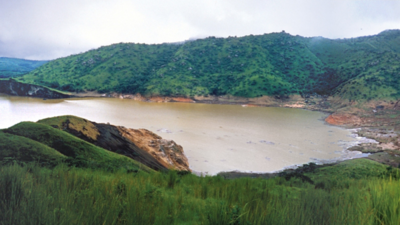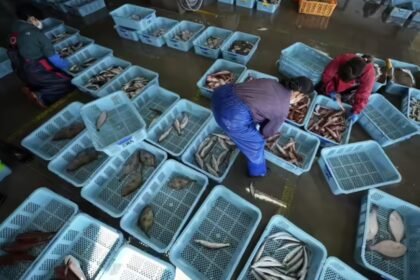On 21 August 1986, Lake Nyos in northwestern Cameroon became the site of one of the deadliest natural disasters in modern history. A sudden limnic eruption released a massive cloud of carbon dioxide (CO2), a gas denser than air, which swept down the surrounding valleys, suffocating people and livestock in nearby villages. Within hours, approximately 1,700 people and 3,500 animals were killed. This catastrophic event shocked the world, as scientists struggled to understand how a seemingly peaceful volcanic lake could unleash such a lethal, invisible force in mere minutes. Even today, Lake Nyos remains a key case study for natural hazard scientists worldwide.
What caused the Lake Nyos disaster ? Understanding the mechanics behind the deadly limnic eruption
The Lake Nyos disaster was caused by a rare natural phenomenon known as a limnic eruption. Limnic eruptions occur when deep lake water becomes saturated with gases, particularly carbon dioxide, which is released suddenly when the water overturns. In the case of Lake Nyos, CO2 had accumulated over decades in the deep layers of the lake, trapped under high pressure. Scientists believe several potential triggers may have initiated the catastrophic outgassing: a minor landslide into the lake, small volcanic activity beneath the lakebed, or unusually heavy rainfall that disturbed the stratified water layers. When the dense CO2-saturated water rose rapidly to the surface, the gas came out of solution explosively, forming a heavy cloud that flowed down surrounding valleys, displacing oxygen and suffocating anything in its path.This rare and unpredictable phenomenon highlights the hidden dangers of certain volcanic lakes, which may appear harmless on the surface but harbor lethal forces beneath.
The deadly impact on people and livestock: Eyewitness accounts and the scale of devastation
The CO2 cloud generated by Lake Nyos traveled at speeds of 20–50 kilometres per hour, hugging the ground due to its higher density compared with air. It flowed into nearby villages within a 25-kilometre radius, including Nyos, Kam, Cha, and Subum, instantly killing people and animals. Eyewitnesses described waking to an overwhelming smell of sulfur or rotten eggs, collapsing unconscious, and finding family members lifeless around them. In total, around 1,700 people and 3,500 livestock died within hours, while approximately 4,000 survivors were forced to flee their homes. Many of these survivors suffered from respiratory issues, paralysis, and pressure-induced lesions caused by the suffocating gas.The psychological trauma was also profound, as communities watched family, friends, and neighbors die silently in the night. The disaster devastated local livelihoods, as the loss of livestock and crops left entire villages struggling to recover.
Immediate scientific response and long-term degassing efforts: Preventing future disasters
The scale and suddenness of the Lake Nyos disaster prompted urgent scientific study to understand and mitigate future risks. Researchers discovered that CO2 could build up in other deep, stratified volcanic lakes, and preventive measures were urgently needed. In 2001, a permanent degassing system was installed in Lake Nyos.The system involves a pipe inserted into the lake’s deep waters to slowly release CO2 in a controlled manner. Initially, pumps were used to start the process, but as the gas began to escape, it created a self-sustaining flow that continues without external power. Two additional pipes were installed in 2011 to increase safety, and by 2019 scientists confirmed that even a single pipe could maintain safe CO2 levels indefinitely.These measures have drastically reduced the risk of another sudden eruption, ensuring the lake is monitored continuously and that surrounding communities are better protected.
Lessons and global significance: How Lake Nyos changed our understanding of natural hazards
Lake Nyos is one of only two recorded limnic eruptions in history, the other being Lake Monoun in Cameroon in 1984. These events have shown that certain volcanic lakes, particularly in the East African Rift region, can store large amounts of CO2 over decades, creating a hidden threat that can be triggered suddenly. The Lake Nyos tragedy sparked global scientific interest in understanding such lakes and implementing early-warning systems. Research extended to other African lakes, including Lake Kivu in the Democratic Republic of the Congo, which is far larger and similarly gas-saturated. Although subsequent studies have revised risk levels for Lake Kivu, the Nyos disaster remains a key example of the lethal potential of limnic eruptions. Beyond science, the tragedy highlights the importance of disaster preparedness, community awareness, and international support for vulnerable populations living near high-risk natural sites.







